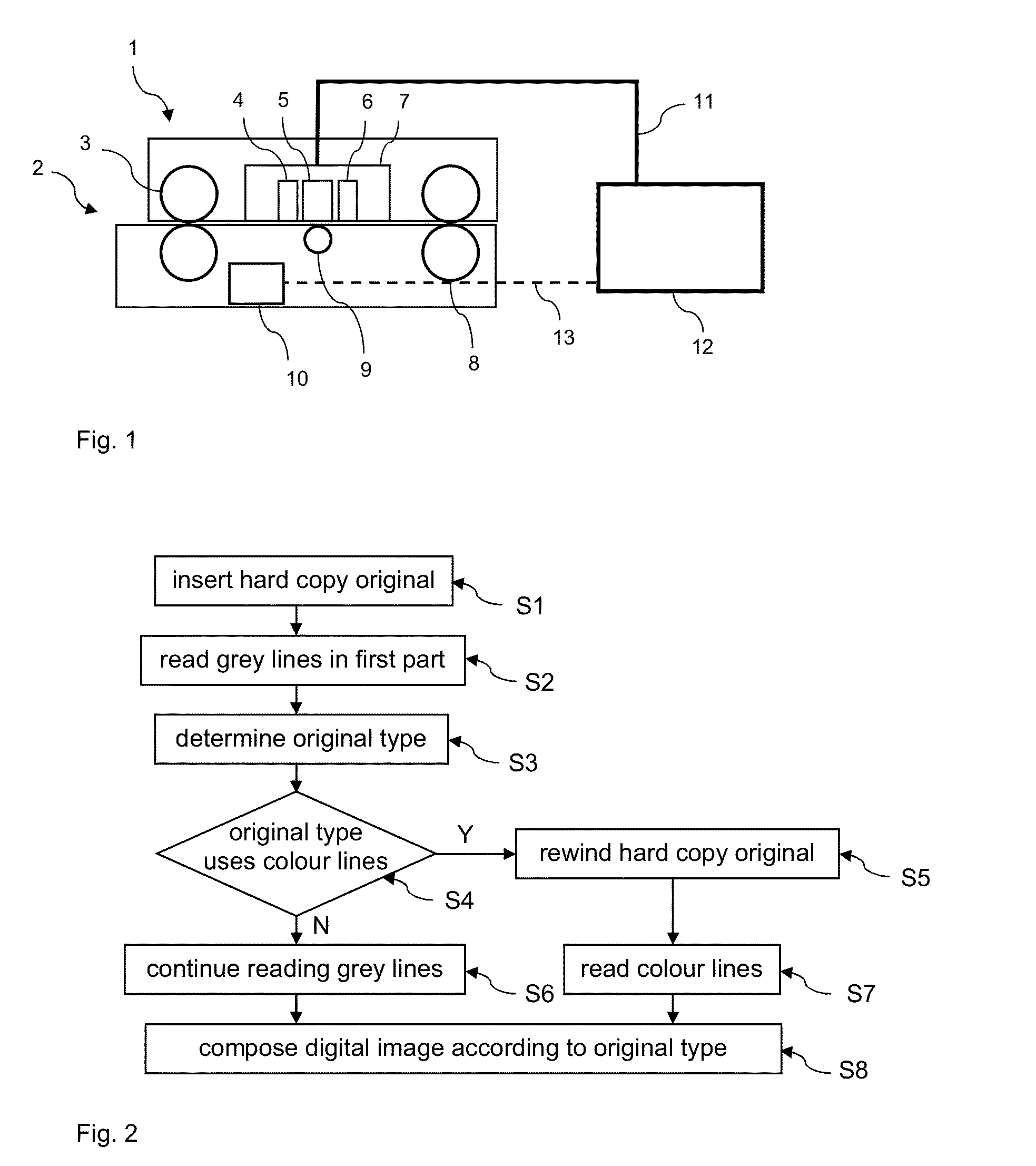Method for scanning hard copy originals
a hard copy and original technology, applied in the field of scanning hard copy originals, can solve the problems of increasing the productivity of the scanner with automatic original type recognition, affecting the productivity of the scanner, and using color lines in the pre-scan, and achieve the effect of high transport velocity of the hard copy
- Summary
- Abstract
- Description
- Claims
- Application Information
AI Technical Summary
Benefits of technology
Problems solved by technology
Method used
Image
Examples
Embodiment Construction
[0022]The present invention will now be described with reference to the accompanying drawings, wherein the same reference numerals have been used to identify the same or similar elements throughout the several views.
[0023]FIG. 1 shows a wide format scanner 1, which is configured to convert hard copy originals having a width of about 20 cm up to about 95 cm and an arbitrary length. These dimensions are in no way a limitation for the invented method. A hard copy original is inserted in the scanner at 2, where the input rollers 3 transport it into the scanner. Inside the scanner, a scanner module 7 comprises light sources 4 and 6, that illuminate the original repetitively from two sides with red, green and blue light in a fixed order. It further comprises a Contact Image Sensor (CIS) array 5, that is sensitive to each of these light types and passes signals that are representative for the optical density of the part of the original, that is in the field of the sensor, through a data li...
PUM
 Login to View More
Login to View More Abstract
Description
Claims
Application Information
 Login to View More
Login to View More - R&D
- Intellectual Property
- Life Sciences
- Materials
- Tech Scout
- Unparalleled Data Quality
- Higher Quality Content
- 60% Fewer Hallucinations
Browse by: Latest US Patents, China's latest patents, Technical Efficacy Thesaurus, Application Domain, Technology Topic, Popular Technical Reports.
© 2025 PatSnap. All rights reserved.Legal|Privacy policy|Modern Slavery Act Transparency Statement|Sitemap|About US| Contact US: help@patsnap.com



